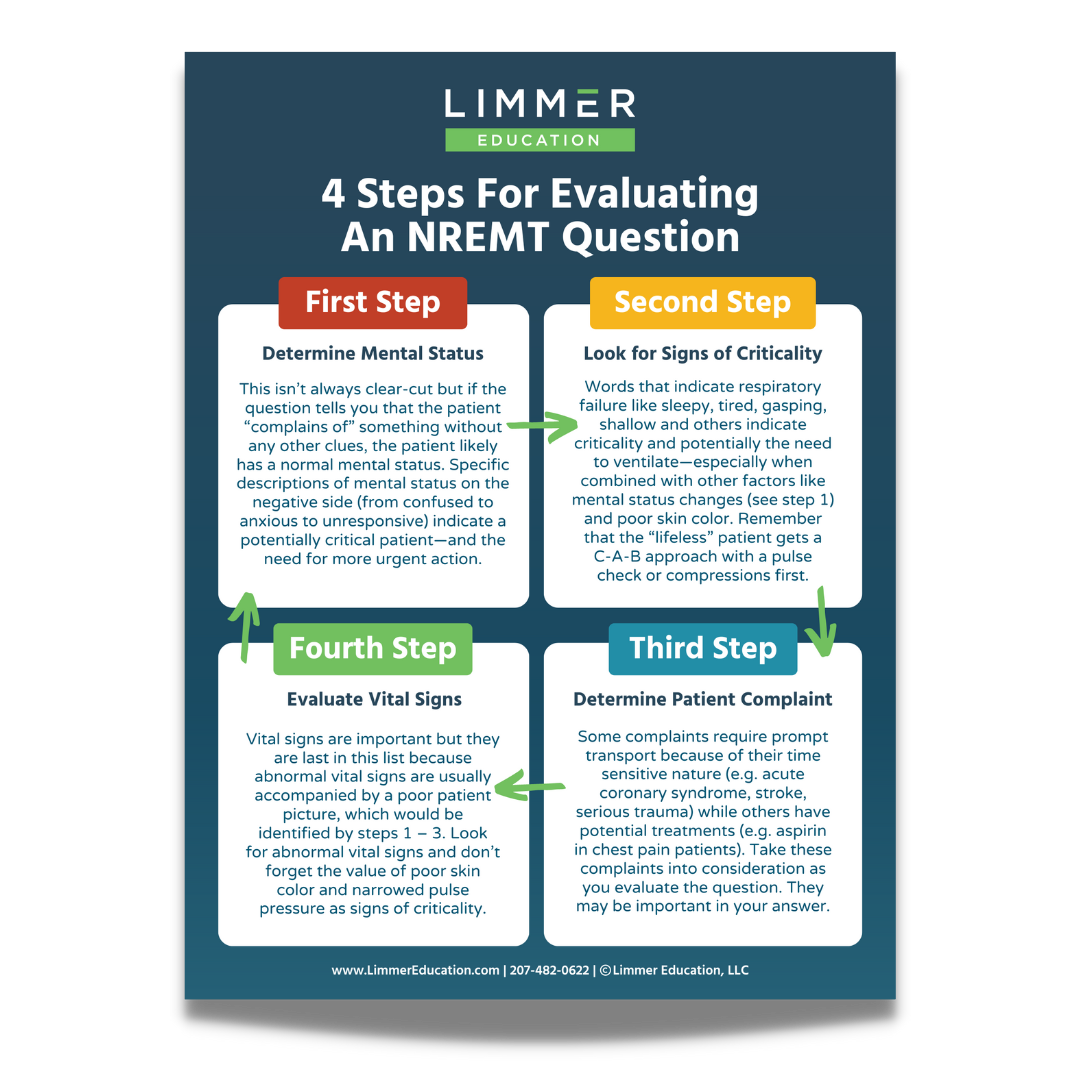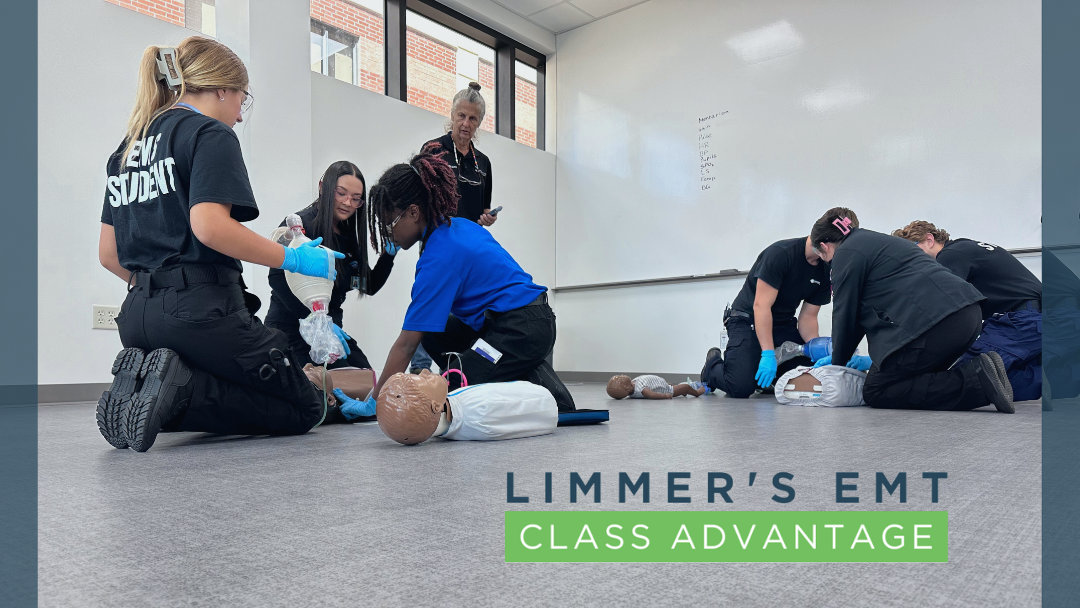4 Steps for Evaluating a NREMT Question

by Dan Limmer, BS, NRP
Our articles are read by an automated voice. We offer the option to listen to our articles as soon as they are published to enhance accessibility. Issues? Please let us know using the contact form.
A colleague and I were having a deep discussion about the NREMT exam. His assertion is that only in very limited situations will the vital signs make a significant difference in the choice the students make on an NREMT question. He believes that the only place vitals truly are the smoking gun is in the patient with increasing intracranial pressure.
So what really is the most important information in the stem of a question? I propose mental status. This led me to other important things and eventually to a “process” for identifying what is important in a scenario-based NREMT question. Originally we came up with three steps to the process: mental status, identifying criticality and vital signs. I then added a fourth step, complaint, since that can be important throughout the call.
Four Steps to Evaluating NREMT Questions
Here is how it breaks down:
Determine the patient’s mental status. This isn’t always clear-cut but if the question tells you that the patient “complains of” something without any other clues, the patient likely has a normal mental status. Specific descriptions of mental status on the negative side (from confused to anxious to unresponsive) indicate a potentially critical patient—and the need for more urgent action.
Look for signs of criticality in the question. Words that indicate respiratory failure like sleepy, tired, gasping, shallow and others indicate criticality and potentially the need to ventilate—especially when combined with other factors like mental status changes (see step 1) and poor skin color. Remember that the “lifeless” patient gets a C-A-B approach with a pulse check or compressions first. Criticality usually requires some sort of immediate action (e.g. pulse check) or intervention (which may include ventilating the patient, glucose administration and/or transport) while the non-critical patient generally allows more time and requires less critical interventions.
Determine the patient’s complaint. Some complaints require prompt transport because of their time-sensitive nature (e.g. acute coronary syndrome, stroke, serious trauma) while others have potential treatments (e.g. aspirin in chest pain patients). Take these complaints into consideration as you evaluate the question. They may be important in your answer.
Evaluate the vital signs (if provided). Vital signs are important but they are last in this list because abnormal vital signs are usually accompanied by a poor patient picture, which would be identified by steps 1 – 3 above. Look for abnormal vital signs and don’t forget the value of poor skin color and narrowed pulse pressure as signs of criticality.
Students get into the testing center and nerves limit their ability to properly analyze a question. If a student can focus on these four steps, they will be better prepared to choose the correct answer.
Have we missed anything important in our steps? Do you believe it would work on the NREMT exam? We’d love to hear your opinion.

Buy the 18 x 24" poster for your classroom!
Shop here.
Related articles

Limmer Education

Dan Limmer, BS, NRP
Comments
Leave a commentThank you for sharing the NREMT steps to evaluating the questions, I believe it will be very helpful in helping me be successful in passing my NREMT exam. Thank you for all you do in helping make students successful!!!!



